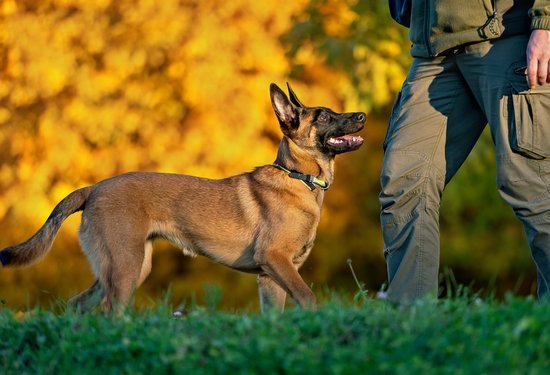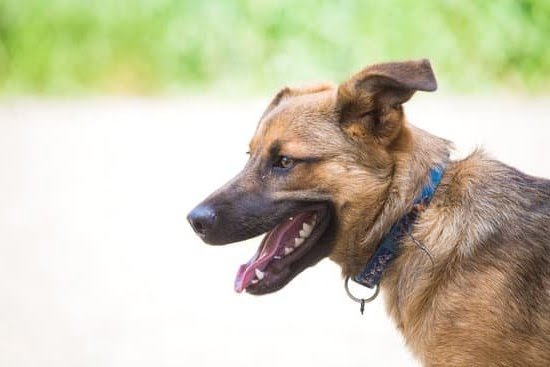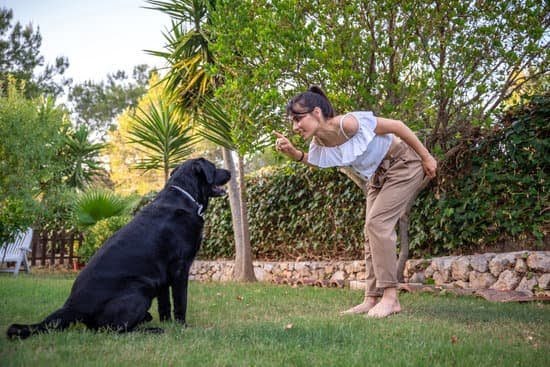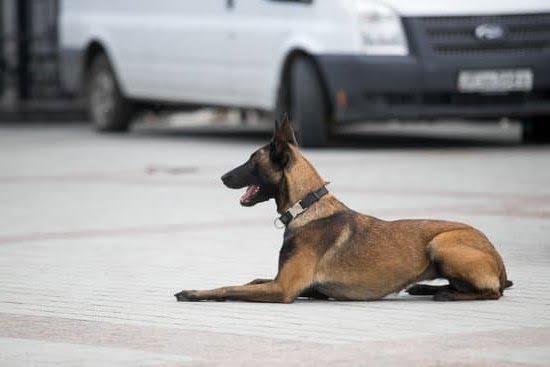How do you potty train a 2 year old dog? Potty training an older dog can be a challenging but rewarding process. Understanding the importance of potty training for older dogs is crucial in ensuring a happy and healthy coexistence with your furry friend. From identifying signs of needing to go, establishing a potty training schedule, to dealing with accidents and potential challenges, this article will provide valuable insights and tips on successfully potty training your 2 year old dog.
Potty training is an essential aspect of good pet ownership, especially when it comes to older dogs. Just like with puppies, potty training a 2 year old dog requires patience, consistency, and understanding of your dog’s behavior. By following the right steps and techniques, you can establish good habits that will benefit both you and your beloved pet in the long run.
In this comprehensive guide, we will explore various strategies and methods for effectively potty training your adult dog. By understanding the significance of consistent training and positive reinforcement, you can work towards achieving successful results while fostering a strong bond with your furry companion. So let’s delve into the intricacies of potty training an older dog and set the foundation for a happy and harmonious relationship between you and your pet.
Understanding Your Dog’s Behavior
Observing Your Dog’s Body Language
When potty training a 2 year old dog, it is important to pay close attention to your pet’s behavior. Dogs often exhibit certain signs when they need to relieve themselves, such as pacing, circling, sniffing the ground, or whining. By observing these cues, you can proactively anticipate when your dog needs to go and take them outside to their designated potty area.
Establishing a Routine
Another key aspect of understanding your dog’s behavior during potty training is establishing a consistent schedule. Take note of the times when your dog typically needs to go, such as after meals, upon waking up in the morning, or before bedtime. By creating a routine around these times and consistently taking your dog outside, you can help them learn when and where they should go potty.
Attention to Indoor Behaviors
In addition to outdoor cues, recognizing indoor behaviors is also crucial in understanding your dog’s need to go. Some dogs may start pacing or becoming restless indoors when they need to relieve themselves. This is an opportunity for you to gently guide them outside and reinforce the proper potty behavior with positive reinforcement.
By being attentive to your dog’s body language and establishing a regular schedule for potty breaks, you can effectively identify their signs of needing to go and support their potty training journey.
Creating a Potty Training Schedule
When creating a potty training schedule, it’s important to take into consideration your dog’s age, breed, and size. Generally, a 2-year-old dog can hold their bladder for about 4-6 hours, so ensure that you schedule frequent potty breaks throughout the day. Take your dog out first thing in the morning, after meals, before bedtime, and any time in between when you notice signs that they need to go.
Additionally, consistency also applies to the location where you take your dog to do their business. Choose a specific spot in your yard or outside area where you want your dog to relieve themselves and always take them to that spot. This helps them associate that area with going potty and will prevent confusion. By sticking to a consistent schedule and designated potty area, you are effectively communicating with your dog and making the potty training process easier for them.
Remember that patience is key during the potty training process. It may take some time for your 2-year-old dog to fully grasp the concept of going outside to use the bathroom. Be patient and understanding as accidents are bound to happen during the learning process.
Reinforce positive behavior with rewards and praise, and stay committed to the schedule you have established. With time and consistency, your older dog will learn where and when it’s appropriate to go potty.
Using Positive Reinforcement
Potty training a 2-year-old dog can be challenging, but using positive reinforcement is key to success. It’s important to understand that older dogs may take longer to potty train compared to puppies, but with patience and the right approach, it can be done effectively. Positive reinforcement involves rewarding and praising your dog for good behavior, which can encourage them to continue exhibiting the desired actions.
When potty training an older dog, it’s essential to use high-value treats as rewards for going potty in the designated area. These treats should be something that your dog really enjoys and doesn’t typically get at other times. This will help create a strong association between going potty in the right place and receiving a special treat, motivating your dog to repeat the behavior.
In addition to treats, verbal praise and affection are also important forms of positive reinforcement. When your dog successfully goes potty outside or in their designated area, make sure to give them enthusiastic praise and petting. This positive interaction reinforces the idea that they’ve done something good, making them more likely to continue doing so in the future.
| Positive Reinforcement Techniques | Benefits |
|---|---|
| Using high-value treats as rewards | Motivates the dog to repeat good behavior |
| Verbal praise and affection | Reinforces the idea of doing something good |
Setting Up a Designated Potty Area
Choosing the Right Spot
When setting up a designated potty area for your 2-year-old dog, it’s important to choose the right spot in your home or yard. Look for an area that is easily accessible to your dog and away from their sleeping and eating areas. This can help your dog understand that this specific spot is for pottying only.
Using Scent Markers
One helpful tip for making the designated potty area clear to your dog is to use scent markers. You can do this by taking a piece of soiled paper towel or a small amount of your dog’s waste and placing it in the designated spot. The scent will help signal to your dog that this is the appropriate area to relieve themselves.
Consistency and Training
In addition to marking the designated area with scent, consistency and training are key components in making it clear for your dog. Take your dog to the designated potty area regularly, especially after meals, drinks, playtime, and naps. Use verbal cues such as “go potty” or “get busy” to reinforce the purpose of the area.
Over time, your 2-year-old dog will come to understand where they are supposed to go potty. Remember that positive reinforcement is important during this process, so be sure to praise and reward them when they use the designated potty area successfully.
By using these strategies, you can create a clear and effective designated potty area for your 2-year-old dog, helping them understand where they should go potty in a consistent manner.
Dealing With Accidents
Accidents are bound to happen during the potty training process, especially when dealing with a 2 year old dog. It’s important to remember that patience is key when handling these accidents. Punishing your dog for these accidents will only create fear and anxiety, making the potty training process even more difficult. Instead, focus on providing gentle guidance and reassurance to your furry friend.
When accidents do occur, it’s essential to clean up any messes promptly and thoroughly. Dogs have a strong sense of smell and if they can still detect their own waste in a certain area, they may be more likely to go there again. Use a pet-safe enzymatic cleaner to completely remove any traces of the accident, ensuring that your dog won’t be inclined to use the same spot as a bathroom in the future.
In addition to cleaning up accidents properly, it’s also crucial to remain consistent with the potty training schedule and positive reinforcement practices. This will help your 2 year old dog understand the desired behavior while minimizing the likelihood of future accidents. Remember that accidents are a normal part of the potty training process, so staying patient and persistent will ultimately lead to success.
| Dealing With Accidents | Patience and Clean-Up Tips |
|---|---|
| Accidents are bound to happen during potty training | Patience is key when handling accidents |
| Thoroughly clean up any messes promptly | Use pet-safe enzymatic cleaner to remove traces of accidents |
| Stay consistent with potty training schedule and positive reinforcement | Remain patient and persistent for ultimate success |
Addressing Potential Challenges
Potty training a 2-year-old dog can be challenging, especially if your pet is stubborn or anxious. However, with the right approach and patience, you can overcome these challenges and successfully potty train your furry friend. Here are some helpful tips for addressing stubbornness and anxiety during the potty training process:
1. Be patient and consistent: Dogs, especially older ones, may take longer to adjust to new routines. It’s essential to remain patient and consistent with your training efforts. Establish a regular potty schedule and stick to it, even if your dog seems resistant at first.
2. Use positive reinforcement: Positive reinforcement is crucial when dealing with stubbornness or anxiety during potty training. Whenever your dog successfully goes potty in the designated area, praise and reward them with treats or affection. This will help build a positive association with the desired behavior.
3. Address anxiety triggers: If your dog exhibits signs of anxiety during the potty training process, such as pacing or whining, identify and address potential triggers. For example, if your dog is anxious about using a new potty area, gradually introduce them to the space by spending time there together during playtime or offering treats.
Dealing with stubbornness and anxiety during potty training requires patience, understanding, and a positive attitude. By implementing these strategies, you can help your 2-year-old dog overcome these challenges and become successfully potty trained.
Seeking Professional Help
When it comes to potty training a 2 year old dog, it’s important to recognize when you may need the assistance of a professional trainer or veterinarian. While many pet owners may be able to successfully train their dog on their own, some dogs may require specialized help due to certain behavioral issues or underlying health concerns. Here are some signs that indicate it might be time to seek professional guidance:
1. Persistent accidents: If your 2-year-old dog continues to have accidents indoors despite consistent training efforts, it may be a sign of an underlying issue that needs to be addressed by a professional. A trainer can assess the situation and offer tailored solutions to address the root cause of the problem.
2. Behavioral challenges: Some dogs may exhibit stubbornness or anxiety related to potty training, making it difficult for them to grasp the concept. In such cases, a professional trainer with experience in behavior modification can provide valuable insights and strategies to help your dog overcome these challenges.
3. Health concerns: If your dog is physically unable to hold its bladder due to medical conditions such as urinary tract infections or incontinence, seeking advice from a veterinarian is crucial. They can diagnose any potential health issues and provide appropriate treatment, which is essential for successful potty training.
Remember that seeking professional help does not mean you’ve failed as a pet owner; rather, it demonstrates your commitment to providing the best care for your beloved furry friend.
Overall, knowing when it’s time to consult a trainer or veterinarian can make all the difference in effectively potty training your 2-year-old dog and ensuring their overall well-being. By addressing any underlying issues with expert guidance, you can set your pet up for long-term success in maintaining good potty habits.
Conclusion
In conclusion, potty training a 2-year-old dog requires patience, consistency, and understanding of your pet’s behavior. It is important to remember that every dog is different, and some may catch on to the training process more quickly than others. By using positive reinforcement, creating a potty training schedule, and setting up a designated potty area, you can effectively teach your older dog good bathroom habits.
Addressing potential challenges such as stubbornness or anxiety may require additional patience and possible professional help from a trainer or veterinarian. Accidents will happen during the training process, but it’s crucial to remain calm and continue with the established routine. By celebrating success and maintaining good habits once your dog is successfully potty trained, you are ensuring long-term success in their behavior.
Overall, potty training a 2-year-old dog is entirely achievable with the right approach and consistency. Remember to be patient with your furry friend as they learn this new behavior. By following the tips and strategies outlined in this article, you can successfully potty train your older dog and enjoy a cleaner, happier home environment for both you and your pet.
Frequently Asked Questions
Can You Still Potty Train a 2 Year Old Dog?
Yes, you can still potty train a 2-year-old dog. While it may take a bit more time and patience compared to training a younger puppy, it is definitely possible with consistency and positive reinforcement.
Can You Train a 2 Year Old Dog to Go Potty Outside?
Training a 2-year-old dog to go potty outside is doable, but it may require more effort than training a younger dog. Establishing a routine, using rewards for good behavior, and keeping an eye on your dog’s bathroom habits can help in this training process.
How Long Does It Take to Potty Train a 2 Year Old Dog?
The time it takes to potty train a 2-year-old dog varies from dog to dog. It depends on the individual dog’s previous experiences, temperament, and the consistency of the owner in training. Some dogs may catch on quickly, while others may take longer to fully grasp the concept of potty training.

Welcome to the blog! I am a professional dog trainer and have been working with dogs for many years. In this blog, I will be discussing various topics related to dog training, including tips, tricks, and advice. I hope you find this information helpful and informative. Thanks for reading!





